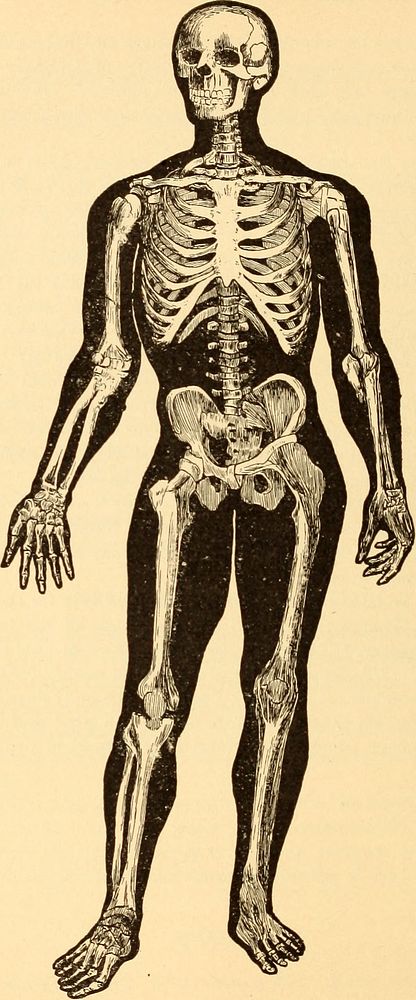https://creativecommons.org/publicdomain/zero/1.0/https://www.rawpixel.com/image/9975465

Identifier: anatomyphysiolo00hewe (find matches)Title: Anatomy, physiology and hygiene for high schoolsYear: 1900 (1900s)Authors: Hewes, Henry Fox, 1867-Subjects: Physiology Health education (Secondary) Human anatomyPublisher: New York : American Book CompanyContributing Library: The Library of CongressDigitizing Sponsor: The Library of CongressView Book Page: Book ViewerAbout This Book: Catalog EntryView All Images: All Images From BookClick here to view book online to see this illustration in context in a browseable online version of this book.Text Appearing Before Image:en this isburned in the open air? in the furnace of an engine which is running?What is meant by oxidation ? Does this occur outside the body ? Wheredoes the oxygen for the process come from when the oxidation occursin a furnace? Where does it come from in the body? V. What is metabolism? How is the body a more perfect machinethan a steam engine? What are organs? Name several. What ishygiene ? What is the direct object of the study of physiology ? Whyshould this study occur at an early age? VI. What is disease ? What is the broadest rule for the preventionof disease ? What is the general aim for which all the organs of thebody work together? Where in the body is the real vital center of lifeand activity? Whenever you lift a weight the energy for this action issupplied by combustion : in what tissues of the body does special com-bustion during this muscular effort occur? In what part does specialcombustion occur when you perform a mathematical problem in yourhead? HEWES, P. & H.—3Text Appearing After Image:The skeleton. CHAPTER III THE SKELETON-THE BONES AND JOINTS THE body is built up upon a solid frame, known as theskeleton (Greek skello, I dry). This skeleton is a very wonderful structure. It gives thebody its shape and height and support. At the same timeit is so put together as to allow one part to move upon theother in the many motions of the body. It is made up of firm structures, called tones. These bonesare the very best substances of which a movable frame likethat of the body could be made, as they are very strong,light, and elastic. You can gain some idea of their strengthwhen you are told that they are twice as resistant as solidoak. The separate bones are built up together Like the beamsand pillars of a house. They are united by joints. Insome cases these joints are firm, like those of the housebeams. In other cases they are loose, like the joint of a boomand a mast upon a boat. These loose joints allow of motionof one bone upon the other and are called movable joints.The bNote About ImagesPlease note that these images are extracted from scanned page images that may have been digitally enhanced for readability - coloration and appearance of these illustrations may not perfectly resemble the original work.
Original public domain image from Wikimedia Commons
Public DomainFree CC0 image for Personal and Business use